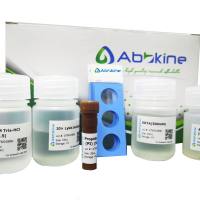Methods for Plasmid and Genomic DNA Isolation from Lactobacilli
互联网
547
Lactobacillus represents a major genus of the lactic acid bacteria that have widespread use in fermented food production. They are also found in the mouth, intestinal tract, and vagina of many animals. They produce bioantagonists compounds such as lactic acid and bacteriocins and hence are used as probiotics to treat gastroenteric disorders (1 ). In view of their commercial importance, a complete characterization of their genome and further genetic manipulation may have great potential for the improvement of these microorganisms. However, compared with that of Lactococcus lactis , the genetic knowledge of lactobacilli is sparse and the availability of genetic systems for its study is limited. Natural plasmids of lactobacilli may play a significant role in vector development techniques that are the basis for applied genetics. Resident plasmids are abundant in Lactobacillus strains. Although some industrially significant characteristics such as metabolic functions, restriction/modification systems, and drug resistance are plasmid DNA encoded, most of these plasmids remain cryptic (2 ). Several protocols have been described for plasmid DNA isolation in this genus (3 ,4 ), mainly based in the Birnboim and Doly method (5 ). In this chapter, we describe two methods used in our laboratory for the isolation of plasmid and genomic DNA. They are based on standard protocols developed for other lactic acid bacteria and render DNA suitable for polymerase chain reaction (PCR) and restriction digestion experiments.









